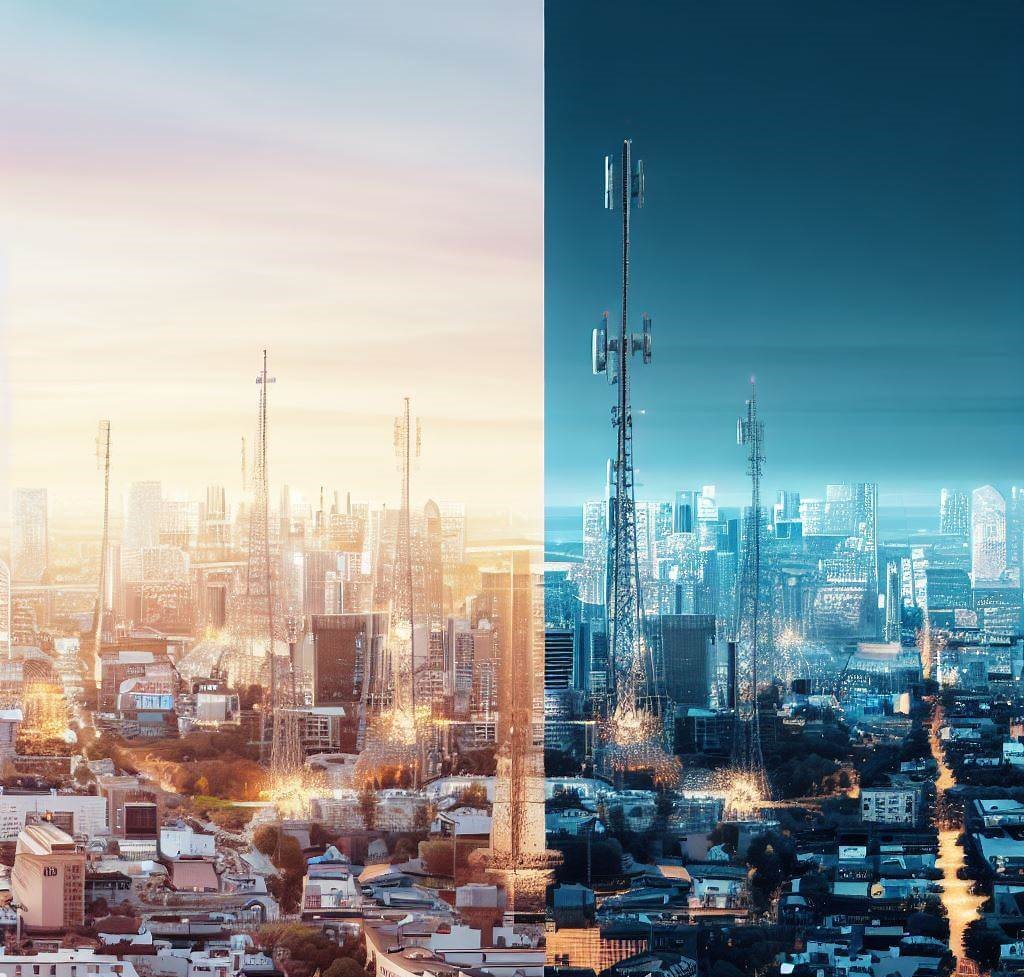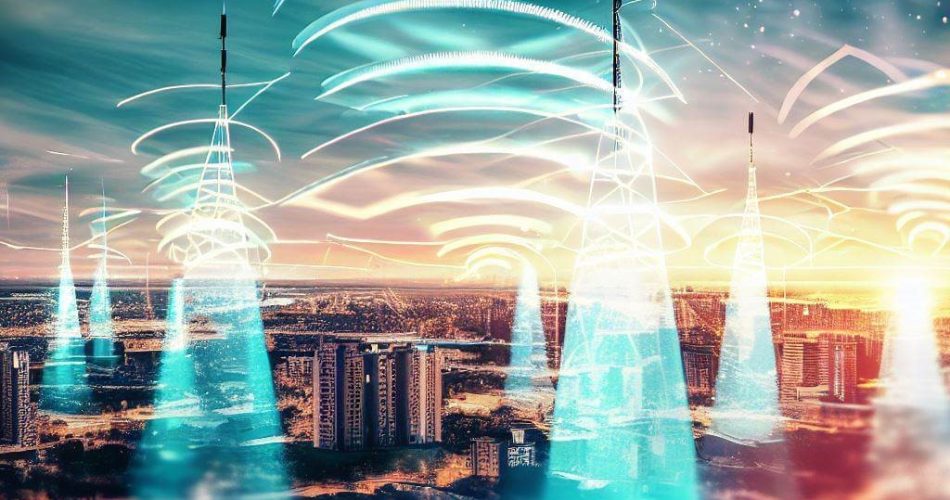Introduction
In today’s rapidly advancing world, where smart devices and the internet have become as essential as bread and water, the deployment of 5G technology is viewed as nothing short of revolutionary. This transformative tech promises to redefine how we interact with technology, boosting the speed and reliability of wireless networks to unprecedented levels. With its blazing speed, 5G is opening doors to a new era of technological marvels—from self-driving cars to AI-powered medical diagnoses. But, there’s a flip side to this tech utopia. There are increasing concerns regarding Electromagnetic Field (EMF) exposure, especially in densely populated cities. Why does EMF protection matter, you ask? Because EMF, especially at the level that 5G might introduce, is a subject of ongoing scientific investigation concerning potential health risks. The debate is rife, opinions are polarized, and credible information is often shrouded in technical jargon. This article aims to demystify the 5G EMF conundrum and offer you pragmatic insights on what it means for city dwellers.
What is 5G Technology?
5G stands for “Fifth Generation” and represents the latest standard for cellular networks. Before diving into what makes 5G the talk of the tech town, let’s take a nostalgic walk down memory lane.
Evolution of Cellular Networks
Long gone are the days of 1G, the first generation of cellular technology that gave us mobile voice calls but not much else. Then came 2G, which added a sprinkle of text messaging. 3G took it a notch higher with mobile internet, and 4G LTE (Long-Term Evolution) made video streaming and high-speed internet a reality. Each of these evolutionary steps came with its own set of frequencies and infrastructure. But remember, none of these networks were designed to support the ballooning number of IoT (Internet of Things) devices, nor could they fulfill the growing appetite for real-time data processing.

How 5G is Different from 4G
5G is not just “one more G” added to the mobile networks; it’s a paradigm shift. While 4G LTE offered theoretical download speeds of up to 100 megabits per second (Mbps), 5G promises speeds as high as 20 gigabits per second (Gbps)—that’s 200 times faster! Imagine downloading an HD movie in seconds rather than minutes or experiencing virtually no lag in online gaming. But how does 5G achieve this? By operating at higher frequencies—often referred to as millimeter waves—ranging from 30 GHz to 300 GHz. While this allows for higher speeds and lower latency, it also raises a critical issue: increased levels of EMF exposure.
These higher frequencies come with trade-offs. For instance, they have a shorter range and are less adept at penetrating walls and other structures. That means more antennas are required, especially in cities, leading to a phenomenon known as “small cell” deployment. These small cells can be as ubiquitous as street lamps, meaning that city dwellers are constantly bathing in a sea of EMF, whether they’re aware of it or not. And it’s this constant exposure that has sparked concerns, debates, and ongoing research into its health implications.
By laying down the foundation of 5G technology and its differentiating factors, we pave the way for a deeper understanding of its potential effects, both beneficial and concerning, on human health and urban life.
The Science of EMF (Electromagnetic Fields)
Understanding the impact of 5G technology requires a solid grasp of what Electromagnetic Fields (EMF) are and how they function. This might sound like a high school physics lesson, but stick with me—it’s crucial information.
Understanding the Electromagnetic Spectrum
The electromagnetic spectrum is a range of all the types of electromagnetic radiation, ordered by frequency or wavelength. It starts with low-frequency waves like radio waves and moves up to high-frequency waves like gamma rays. Everyday appliances like your microwave or TV, natural phenomena like sunlight, and yes, your mobile phone, all emit some form of electromagnetic radiation. Why should you care? Because different types of EMF have different properties, and understanding where 5G sits on this spectrum helps us comprehend its potential impact.
Different Types of EMF
Electromagnetic Fields are generally categorized into two types: non-ionizing and ionizing radiation.
- Non-ionizing Radiation: This includes low-to-mid frequency radiation such as radio waves, microwaves, and even visible light. They have less energy and are generally considered less harmful. 5G falls into this category.
- Ionizing Radiation: This involves high-frequency radiation like X-rays and gamma rays, known for their potential to ionize atoms and molecules, which can lead to cellular and DNA damage.
Research indicates that the non-ionizing radiation from 5G technology is unlikely to cause the ionization of atoms and molecules. However, the higher frequencies used in 5G—often in the millimeter-wave range—still warrant closer scrutiny.
5G EMF Exposure in Cities
The Concentration Factor
One of the defining characteristics of 5G networks in urban environments is the need for a higher number of antennas and small cell sites. Compared to rural or suburban settings, cities have a far greater density of these installations. In fact, a 2018 study published in the IEEE Access journal suggests that the density of 5G infrastructure could be up to 10 times greater in cities than in less populated areas. The research indicates that this concentration significantly elevates the levels of EMF exposure in urban areas, making it a pressing concern for city dwellers.
EMF Hotspots
Certain areas in cities have been identified as EMF hotspots, where exposure levels are notably higher. These include high-traffic areas like shopping malls, airports, and business districts. A study from the Environmental Health Trust highlights that EMF levels in these hotspots can exceed recommended safety levels set by international guidelines.
Research on EMF Levels in Cities
A growing body of research is focusing on EMF exposure in urban settings. One such study, published in the Journal of Exposure Science & Environmental Epidemiology, observed that EMF levels in urban residential areas were higher than those in rural areas, adding an extra layer of concern. Another research article in the International Journal of Environmental Research and Public Health points out that high EMF levels could potentially disrupt the body’s circadian rhythms, although the evidence is not yet conclusive.
Long-term vs. Short-term Exposure
Most existing research has focused on short-term exposure, but what about the long-term effects? The World Health Organization has flagged the need for more longitudinal studies to assess the long-term health risks associated with continuous EMF exposure, especially in urban environments where 5G networks are becoming ubiquitous.
Public Health Recommendations
In light of these findings, various public health organizations recommend caution and preventative measures. The American Cancer Society, while not asserting that 5G is harmful, suggests that people who are concerned about EMF exposure should keep a distance from sources of EMF whenever possible.
By digging deep into the subject of 5G and EMF exposure in cities, one thing becomes clear: while 5G brings a slew of benefits, the associated increase in EMF exposure is a subject that warrants diligent scrutiny and ongoing research.

Potential Health Concerns
The debate over the health implications of 5G EMF exposure is a matter of public discourse, shaped by a mix of scientific, political, and social factors. Even as 5G technology is being rolled out, research on its potential health effects is ongoing. Here are some of the areas that have caught the attention of researchers and public health experts.
Cellular Effects
Researchers have been investigating how EMF, including the frequencies used for 5G, may affect cellular functions. Some studies, such as those published in the International Journal of Oncology, suggest that EMF exposure could potentially lead to oxidative stress in cells, which in turn might contribute to the risk of chronic diseases. However, the evidence is still inconclusive.
Sleep and Circadian Rhythms
Earlier, we touched upon a study published in the International Journal of Environmental Research and Public Health that pointed out that high EMF levels could disrupt the body’s circadian rhythms. If confirmed, this could have significant implications for sleep quality and overall well-being.
Nervous System Effects
Some animal-based studies, including those cited by Bioelectromagnetics, have shown that EMF exposure can affect nervous system function. While these results cannot be directly translated to humans, they do warrant further investigation.
Potential Cancer Risk
The question on everyone’s mind: does 5G EMF exposure increase the risk of cancer? As of now, agencies like the World Health Organization and the American Cancer Society state that there is no conclusive evidence linking non-ionizing radiation, including 5G, to cancer. However, more research is needed to definitively rule this out.
Pros and Cons of 5G EMF Exposure
Despite the concerns, it’s important to remember that 5G technology also brings with it incredible advancements. Let’s weigh the pros and cons.
Pros
- Blazing Fast Speeds: As mentioned earlier, 5G can offer speeds up to 20 Gbps, revolutionizing how we use the internet.
- Low Latency: The millisecond latency can make real-time communication and remote control more effective, crucial for applications like telemedicine and autonomous driving.
- Network Efficiency: 5G is designed to more effectively manage network resources, allowing for more devices to be connected at the same time.
Cons
- Increased EMF Exposure: The dense network of antennas and higher frequencies mean potentially higher EMF exposure, especially in cities.
- Short-term Uncertainties: As discussed, some studies suggest potential cellular and nervous system effects, although conclusive evidence is lacking.
- Infrastructure Costs: The need for more antennas means higher costs, which could be passed down to consumers.
- Limited Range: Higher frequencies have shorter ranges, requiring more infrastructure and complicating rural deployments.
To sum up, while 5G promises a range of benefits, from super-fast internet to advancements in telemedicine and IoT, it also brings with it questions about the potential for increased EMF exposure. The scientific community agrees that more research is needed to fully understand the long-term health impacts, especially in densely populated urban areas.
Practical Steps for EMF Protection
As the dialogue about EMF exposure and its potential impact continues, many people wonder what they can do in the meantime to protect themselves. Whether or not the fears surrounding EMF exposure are eventually validated, it can’t hurt to take some precautionary measures, right?
Distance is Your Friend
The intensity of EMF decreases significantly with distance. Maintaining a safe distance from your router, especially when not in use, is a simple but effective measure. The American Cancer Society recommends this as one of the practical ways to minimize EMF exposure.
Use Wired Connections
Could going old-school be a good idea? Opting for a wired connection over Wi-Fi whenever possible can reduce the need for wireless radio frequencies and thereby lower EMF exposure.
EMF Shielding Products
The market is flooded with EMF shielding products such as special fabrics, phone cases, and screen protectors that claim to block or reduce EMF. While their efficacy is still debated, some people find them to be an extra layer of precaution worth having.
Limit Device Use
Considering that smartphones are a significant source of EMF, limiting their use or using hands-free options could reduce close contact and potential exposure.
Be Mindful of Hotspots
As we discussed, some areas in cities are EMF hotspots. Being aware of these and minimizing time spent in such areas can also contribute to reduced EMF exposure.
Regulatory Measures
When it comes to 5G and EMF, the regulatory landscape is still evolving. Governments and international bodies are making strides to establish rules that balance technological advancement with human health considerations.
Existing Guidelines
Several international bodies, such as the International Commission on Non-Ionizing Radiation Protection (ICNIRP), have established guidelines on EMF exposure limits. These guidelines are based on decades of research but are often criticized for not being updated to reflect the specific frequencies used by 5G networks.

New Research Initiatives
Many governments are funding new research initiatives to understand the potential health impacts of 5G-related EMF exposure. These results could lead to revised guidelines in the future.
Public Awareness Programs
Public health organizations are stepping up efforts to educate the public on EMF and its potential risks. These programs aim to provide credible information that can help individuals make informed decisions.
Future Regulations
Given the fast-paced deployment of 5G networks, regulators are under pressure to establish comprehensive guidelines that address the newer frequencies used by 5G, especially in the millimeter-wave range.
In the grand scheme of things, the regulatory outlook is a work in progress. As more research emerges, it is likely that regulations will be updated to reflect new findings, hopefully providing a clearer framework for the safe deployment and use of 5G technologies.
Future of 5G and EMF Exposure
As 5G technology gains traction globally, its influence on EMF exposure levels will inevitably continue to be a topic of concern and research. So, what can we expect down the line?
Innovation in Infrastructure
Tech companies are actively working on innovative solutions that could potentially lower EMF emissions. For instance, beamforming technology focuses signals more directly between the device and the network, aiming to minimize ‘leakage’ and thus, theoretically, reducing EMF exposure.
Better Monitoring Tools
The deployment of more sophisticated EMF monitoring devices in cities can help both regulatory bodies and the public get real-time data on EMF levels, making it easier to make informed choices and policies.
Ethical Considerations
There’s a growing call for incorporating ethical considerations in the development and deployment of 5G technology. Topics such as data privacy, environmental impact, and of course, potential health implications are gaining prominence in the discourse.
Navigating the Electromagnetic Seas: Final Thoughts
As we sail through the ocean of information and opinions about 5G and EMF exposure, one thing is clear: The subject is complex and constantly evolving. Whether you’re thrilled about downloading a 4K movie in seconds or concerned about the unknown long-term effects of EMF exposure, staying informed and taking sensible precautions seems to be the balanced way to navigate these electromagnetic seas.
FAQs
1. Are all EMF frequencies harmful?
No, not all EMF frequencies are harmful. In fact, many daily activities and natural phenomena involve some level of EMF. However, the potential impact largely depends on the type of EMF and the level and duration of exposure.
2. What is the current stance of health organizations on 5G and EMF?
Most health organizations, including the World Health Organization, state that there is no conclusive evidence to suggest that EMF exposure from 5G is harmful. However, research is ongoing.
3. Do EMF shielding products really work?
The effectiveness of EMF shielding products is a matter of debate. While some studies suggest they can reduce exposure, there is no consensus on whether they provide significant health benefits.
4. Are rural areas safer than cities when it comes to 5G EMF exposure?
While it’s true that rural areas generally have lower levels of EMF due to fewer antennas and cell sites, the overall risk is still not fully understood and is the subject of ongoing research.
5. What are some simple ways to reduce EMF exposure at home?
Some straightforward methods include maintaining distance from electronic devices, especially when not in use, opting for wired connections over wireless when possible, and being mindful of time spent in EMF ‘hotspots.’

